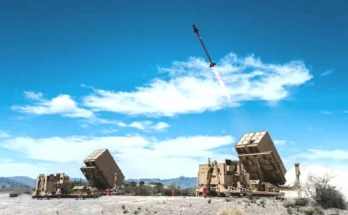by Stuart Slade, Forecast International.
The latest updates to Forecast International’s Industrial and Marine Gas Turbine Database show that the conflict in Ukraine is having a serious impact on Russian naval construction programs. At present, work on at least seven Russian frigates and a number of smaller vessels has been suspended due to the lack of gas turbines.
At the root of the problem is the legacy left by the Soviet system of industrial development. This saw components of the defense infrastructure being distributed all over the country for the dual motives of developing the economic resources of the country and reducing its vulnerability to strategic (read nuclear) attack. Maritime gas turbine production was the responsibility of Zorya-Mashproekt at Kaborga in Ukraine. Nearly all Russian gas turbine-powered warships use machinery from this plant, the only exceptions being a few air cushion landing craft that use aero-derived gas turbines. With the outbreak of hostilities between Russia and Ukraine, the Ukrainian government, quite reasonably, embargoed any future deliveries of marine powerplants.
A short-term solution to this problem appears implausible, since Russia has become far too invested in the Ukrainian confrontation to back down. The obvious solution would be for Russia to establish its own maritime gas turbine construction capability, and moves to this end are now in hand. Saturn VMF, the daughter company of the Rybinsk-based NPO Saturn, is preparing to produce the first Russian-made gas turbines for the Russian Navy. The problem is that the engines currently available from that source are small units suitable for patrol craft. They do not solve the issue of powering larger warships.
The president of Russia’s United Shipbuilding Corporation, Alexei Rakhmanov, summarized the problem when he said, “We hope that at the beginning of 2017, first turbines – to be more precise, first prototypes – will be through bench tests in Rybinsk and we will be able to begin mounting them on ships we are building for the Russian Navy. Before 2017, we will have to either try to get what we have already paid for or will have to change the configuration of the ships these engines were meant for.”
The implication of this statement is that the engines in question will not be available in production quantities much before 2022. Neither the Russian Navy nor export customers will be prepared to wait eight years to get their ships. Obtaining the engines from Ukraine seems improbable, since the current political situation is unlikely to make the Ukrainian government well-disposed to complying with Russian requests. That leaves changing the configuration of the ships, a redesign task that may be more difficult than it sounds.
Major Russian warships use either COGAG (combined gas and gas) or COGOG (combined gas or gas) propulsion layouts. The COGAG configuration uses cruise gas turbines for standard running, with boost turbines added when high speeds are demanded. In the COGOG arrangement, the cruise gas turbines are declutched and replaced by the boost turbines for high- speed running. Both these layouts are the “rich man’s option,” used by navies that place performance and combat capability ahead of economy. Navies that do not have the funding for these options use diesels for cruise propulsion and, for small ships, high-speed running as well. Russia has made steps in that direction, refitting many of its Project 1241 Tarantul-class missile attack craft with diesel cruise propulsion.
So, replacing the gas turbines on the suspended warships with diesels may be the only short-term option available. This presents problems though. Diesels, even in their modern supercharged designs, do not produce the power output of gas turbines. So, the performance of the re-equipped ships will suffer. Also, diesels are larger and heavier than gas turbines, affecting the weight distribution within the ships and raising questions over the capacity of the machinery spaces to accept the replacement units. An all-diesel version of the existing frigate designs will be substantially inferior in performance to the gas turbine originals, although they will be much cheaper to run.
There is another problem as well. Back in the 1970s, the U.S. Navy came to the conclusion that diesel generators on warships could not supply the volume of electricity needed to run the new generations of combat systems then entering service. Gas turbine-powered generator sets offered both adequate electrical supplies and improved responsiveness. As a result, the U.S. Navy shifted to gas turbine ship’s service generators, the Allison 501-K17 and later the 501-K34, for its ships. It must be assumed that the Russian Navy followed a similar route for the same reasons. That means that the suspended ships may need new ship’s service generators as well as propulsion machinery.
So, it appears that the current confrontation with Ukraine has given the Russian Navy some serious problems. Perhaps it should have remembered a naval version of the old Russian proverb, “In warships, gas turbine industry drives you.”
For 50 years, Forecast International intelligence reports have been the aerospace and defense industry standard for accurate research, analysis, and projections. Our experienced analysts compile, evaluate, and present accurate data for decision makers. FI's market research reports offer concise analysis of individual programs and identify market opportunities. Each report includes a program overview, detailed statistics, recent developments and a competitive analysis, culminating in production forecasts spanning 10 or 15 years. Let our market intelligence reports be a key part of reducing uncertainties and mastering your specific market and its growth potential. Find out more at www.forecastinternational.com



